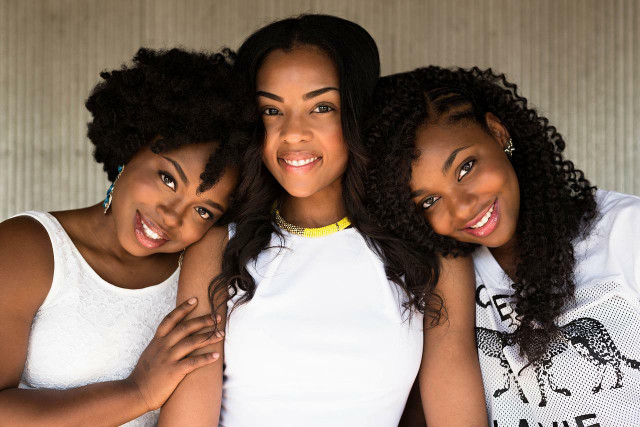Polyamorous relationships are deeply loving, respectful and connected, as they are based on honest communication. There are many different types of polyamorous relationships.
Polyamory is the practice of having romantic relationships with multiple people. This is different from the typical monogamous partnerships that many are used to. While it may sound like cheating, polyamory is actually a type of ethical non-monogamy, in which all parties involved have consented.
There are other types of ethical non-monogamy as well, such as open relationships and swinging. Polyamory is a bit different because it tends to focus more on deep, intimate and romantic relationships.
The idea behind polyamory is that love is infinite and that one’s love should not be restricted to only one romantic partnership. Those who practice polyamory generally feel that they have the capacity to be in love with more than one person, similar to how people have love for many family members and friends.
Types of Polyamory

(Foto: CC0 / Pixabay / trevoykellyphotography)
There are seven main types of polyamory, but of course every relationship is nuanced. Sexuality will vary from person to person, as will the type of relationship. For example, some polyamorous couples date people separately, while others date other people together. Some people only date the opposite sex within their polyamorous relationships, and some don’t have sex at all. Because everyone is so unique, it’s hard to put poly relationships into boxes. Still, there are some helpful terms to know.
- Hierarchical poly: This is a type of polyamory in which there is a primary couple, and then other relationships are secondary or tertiary. The primary couple prioritizes their own relationship, while exploring relationships with others as well, either together or separately. The primary couple makes sure they are comfortable with what their partner is doing, and will likely check in with eachother often to make sure they are on the same page. Some couples may even follow a set of rules, for example about how often they will see seconary partners or how serious those relationships should be.
- Anchor partners: Anchor couples do not see their multiple relationships as hierarchical. They view all their romantic relationships as equal, however they may have one or more “anchor” relationships that are defined by factors like finances, a shared home or children.
- Triad: Also known as throuples, these are relationships between three people. They often start with a couple who then add a single to their relationship.
- Quad: Similarly, quads are four-person relationships. They are often created out of two separate couples.
- Polyfidelity: When everybody involved is satisfied with their connections, and no longer wishes to pursue other relationships, the group may decide on polyfidelity. This is when those in a polyamorous relationship agree to stay closed off to any newcomers, and remain commited to one another.
- Vee: A vee is when one person has two separate romantic relationships with two different people (so called because of the “V” shape of the relationship). Unline a triad, the two people sharing a romantic partner are typically not also dating each other, and may even be strangers. This is a type of solo polyamory, in which a single person engages in romantic partnerships on their own without a primary or anchor partner.
- Relationship anarchy: This is when everybody involved is free to pursue romantic and sexual relationships with anybody they choose. There are no rules or hierarchy.
Polyamorous Relationships: Best Practices



(Foto: CC0 / Pixabay / pixel2013)
Engaging in polyamory may or may not be for you. Some people find it overwhelming, while others find it freeing and wonderful. In a world which is often heteronormative and monogamy-focused, it can be difficult to open your eyes to other types of romantic relationships. If you’re interested in pursuing polyamory, it’s a good idea to speak with polyamorous friends or acquaintances about their experiences, and do your own research on the subject. Here are guides which can help you:
- The Ethical Slut: A Practical Guide to Polyamory, Open Relationships & Other Adventures by Janet W. Hardy and Dossie Easton, available on Amazon**
- The Polyamory Breakup Book: Causes, Prevention, and Survival by Kathy Labriola, available on Amazon**
The first and most important step in polyamory is to be open and honest with whomever you are dating. Make sure to communicate your wants and needs, and to respect those of your companion(s). Whether you are casually seeing someone, you are in a serious monogamous relationship, or you’re just dating around, you should be vocal about your interest in polyamory with whomever you are dating. Make sure you are on the same page so you can move forward together.
Just like any romantic relationship, there will some be problems which can arise. A common myth about polyamorous relationships is that the people in them don’t get jealous. People in polyamorous relationships can and do get jealous, at times. This is something you can learn to navigate in the context of your specific poly relationship.
Similarly, polyamory doesn’t equate to an ‘anything goes’ relationship. Boundaries and hard rules are frequently part of polyamorous relationships, in order to make sure all parties are happy. Again, honest communication is imperative to making sure any relationship works. With poly relationships, this is even more important as there are complex thoughts, feelings and emotions to be discussed and managed.
If you think polyamory may be right for you, make sure to ease into it slowly and continuously check in with others in order to make sure everyone is comfortable and happy. Focus on the love and be intentional in your relationships, and you may find that polyamory works for you.
Read more:
- 12 Sustainable & Unique Anniversary Gifts
- The Mental Load of Motherhood & 5 Ways Partners Can Help
- Acts of Service Love Language: 20 Examples
Do you like this post?






